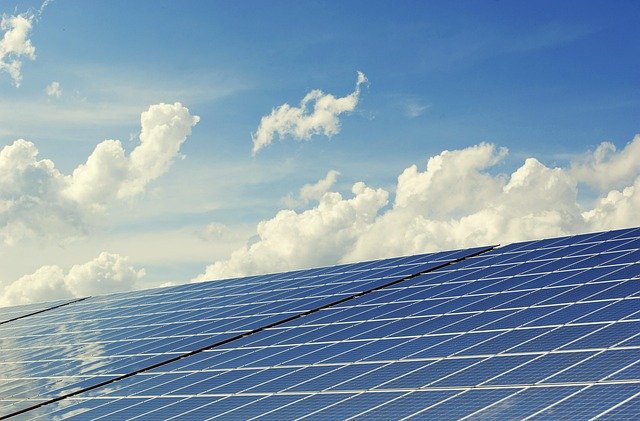Capture the Sunlight, Empower the Future: Understanding Solar Panels
Solar panels represent one of humanity's most promising technologies for sustainable energy production. These remarkable devices transform sunlight—an abundant and renewable resource—into electricity without producing harmful emissions or depleting natural resources. As climate concerns grow and energy needs increase worldwide, understanding how solar technology works and its various applications has become increasingly important for homeowners, businesses, and communities seeking cleaner energy alternatives.

Solar panels have revolutionized how we think about energy production and consumption, offering a sustainable alternative to fossil fuels. These innovative devices harness the power of the sun—an essentially limitless energy source—to generate electricity that can power homes, businesses, and even entire communities. As solar technology continues to advance and become more accessible, understanding its fundamentals becomes increasingly valuable for anyone interested in renewable energy solutions.
What is a solar panel?
A solar panel, also known as a photovoltaic (PV) panel, is a device designed to absorb sunlight and convert it into usable electricity. Each panel consists of multiple photovoltaic cells made primarily from silicon, a semiconductor material that exhibits the photovoltaic effect. These cells are arranged in a grid-like pattern and protected by a glass casing with special insulation to withstand various weather conditions.
Solar panels can be installed on rooftops, mounted on the ground, or integrated into building materials. They function silently, require minimal maintenance, and can operate effectively for 25-30 years. When connected together, multiple panels form a solar array or system that can generate significant amounts of electricity, potentially meeting all the energy needs of a household or business.
Core principle: From photons to electrons
The conversion of sunlight into electricity through solar panels involves a fascinating process based on quantum physics. When photons (particles of light) strike the photovoltaic cells in a solar panel, they transfer their energy to the electrons in the semiconductor material, typically silicon. This energy infusion excites the electrons, knocking them loose from their atoms and allowing them to flow freely.
The solar cell’s design includes two layers of silicon with different electrical properties—one positively charged (p-type) and one negatively charged (n-type). The junction between these layers creates an electric field that forces the freed electrons to move in a specific direction, generating direct current (DC) electricity. This current is then collected by metal conductive plates on the cells and transferred to wires, where it can be converted to alternating current (AC) by an inverter for household use or sent to the electrical grid.
Mainstream types of solar panels
Three primary types of solar panels dominate today’s market, each with distinct characteristics suitable for different applications:
Monocrystalline panels feature cells made from single silicon crystals, giving them a uniform dark appearance with rounded corners. These panels offer the highest efficiency rates (typically 15-22%) and longevity, making them ideal for limited spaces. However, they come at a premium price point.
Polycrystalline panels contain cells made from multiple silicon fragments melted together, resulting in a speckled blue appearance. While slightly less efficient (13-16%) than monocrystalline options, they provide a more affordable alternative with a smaller carbon footprint during manufacturing.
Thin-film panels consist of photovoltaic materials deposited in thin layers on glass, plastic, or metal. Though less efficient (10-13%) than crystalline options, they offer advantages in flexibility, lightweight design, and performance in high temperatures or low-light conditions. They’re particularly useful for specialized applications like building-integrated photovoltaics.
Installation and Cleaning Techniques
Proper installation is crucial for maximizing a solar system’s performance and longevity. The process typically begins with a site assessment to evaluate sunlight exposure, roof condition, and structural integrity. Solar panels should be oriented to capture maximum sunlight—typically facing south in the Northern Hemisphere with an optimal tilt angle based on the installation location’s latitude.
Professional installers will mount the panels using specialized racking systems, connect the electrical components, and install inverters to convert the DC electricity to usable AC power. They’ll also implement safety mechanisms like rapid shutdown capabilities and proper grounding.
Regarding maintenance, solar panels require minimal but regular care. Most systems benefit from cleaning 2-4 times per year, depending on local conditions. Cleaning involves removing dust, pollen, bird droppings, and other debris that can reduce efficiency. This can be accomplished using specialized long-handled brushes with soft bristles, microfiber cloths, and deionized water. For safety reasons, it’s advisable to clean panels early in the morning when they’re cool and less likely to be damaged by cold water on hot surfaces.
Solar panel efficiency and performance factors
Several factors influence how effectively solar panels convert sunlight into electricity. Panel efficiency—the percentage of sunlight converted to usable electricity—ranges from 10% to over 22% depending on the technology used. Higher efficiency panels generate more power in limited spaces but typically cost more upfront.
Geographical location significantly impacts performance, with panels in sunny regions like the southwestern United States producing more energy than those in cloudier, northern areas. Proper orientation and tilt angle can optimize sunlight capture throughout the day and seasons. Temperature also affects performance—contrary to popular belief, solar panels actually operate more efficiently in cooler conditions, with performance decreasing slightly as temperatures rise above 77°F (25°C).
Shading from trees, buildings, or other obstructions can dramatically reduce output, even when only a small portion of a panel is affected. Modern systems often incorporate microinverters or power optimizers to minimize the impact of partial shading on overall system performance.
The economics of solar energy
The financial aspects of solar panel systems have changed dramatically over the past decade. The average cost of residential solar installations in the United States ranges from $11,000 to $15,000 for a 6kW system after federal tax incentives. Commercial installations benefit from economies of scale, with costs typically between $1.00 and $1.50 per watt.
| System Type | Average Cost (after incentives) | Typical Payback Period | Expected Lifetime |
|---|---|---|---|
| Residential (6kW) | $11,000-$15,000 | 7-10 years | 25-30 years |
| Commercial (100kW) | $100,000-$150,000 | 5-7 years | 25-30 years |
| Utility-Scale (1MW+) | $1-1.5 million | 5-8 years | 25-30 years |
Prices, rates, or cost estimates mentioned in this article are based on the latest available information but may change over time. Independent research is advised before making financial decisions.
The return on investment for solar panels depends on local electricity rates, available incentives, and financing options. Many homeowners see payback periods of 7-10 years, after which the electricity generated is essentially free for the remaining 15-20 years of system life. Additional financial benefits include increased property values and protection against rising utility rates.
Solar energy represents a significant step toward a more sustainable energy future. By converting abundant sunlight into clean electricity, solar panels offer environmental benefits while providing energy independence and long-term financial savings. As technology continues to improve and costs decrease, solar power will likely play an increasingly important role in the global energy landscape, empowering individuals and communities to participate in the renewable energy transition.




